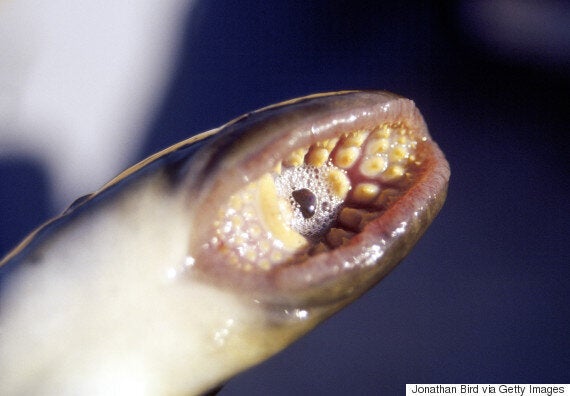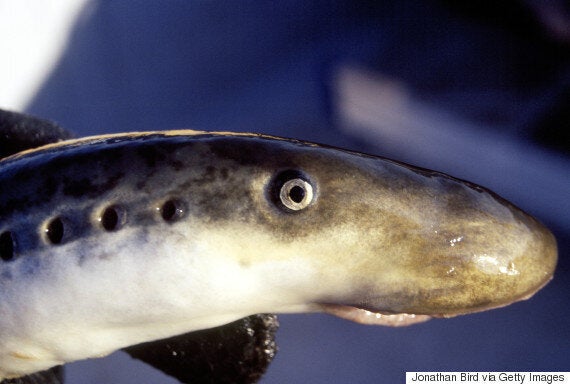A prehistoric fish equipped with a circular disc of razor sharp teeth has reappeared in England’s rivers.
Sea lampreys prowled the Earth’s waterways around 200 million years before the dinosaurs but had dipped their terrifying faces out of sight in recent years.
They are considered endangered in Europe and have not been seen in Britain since the 1800s.

Sea lampreys are making a comeback to English rivers
Yet the snake-like creatures, which can grow up to 1 metre in length, are slowly returning to their old haunts – thanks to the lowest levels of pollution for more than a century.
The Environment Agency has also contributed to bringing lampreys back thanks to its work removing some river structures such as weirs.
SEE ALSO: Bloody, Fanged Sea Lamprey Goes Viral On Reddit, Reminds Everyone Never To Go Swimming Again
Despite their fearsome appearance, lampreys have been regarded a luxury food throughout history and are recorded as having been eaten by the Vikings, poached in red wine by the Romans and eaten in pies by the British monarch on special occasions.
King John is said to have fined the City of Gloucester the equivalent of £250,000 for not delivering his Christmas lamprey pie and Queen Elizabeth II was sent a lamprey pie from Gloucester for her diamond jubilee in 2012, though the fish were imported from the Great Lakes in North America.

Game of Thrones character Tyrion Lannister, played by Peter Dinklage (pictured), dined on sea lamprey pie
Lamprey pie also features in the TV series Game of Thrones. In ‘The Prince of Winterfell’ Tyrion Lannister dines on lamprey pie whilst talking over plans for the Battle of the Blackwater with his sister Queen Cersei.
Environment Agency fisheries expert Simon Toms said: “For the last 200 hundred years, some rivers have not been capable of supporting lamprey species as a result of water quality, poor habitat and manmade barriers.
“Now that water quality has improved and some of these barriers have been removed we are seeing lampreys return to the upper reaches of rivers such as the Ouse, Trent, and Derwent.

The invertebrates can grow up to a metre in length
“These are fascinating fish, living fossils, that have a special place in the history and traditions of this country, and we hope that with a helping hand from us they will be able to thrive in England’s rivers once again.”
As well as being a fascinating ancient species, lampreys are ecologically important in helping to process nutrients in rivers as well as a food source for fish and birds, such as herons and sawbill ducks.
There are three lamprey species found in rivers in England. The brook lamprey, which, as an adult, measures around 15cm, completes its life cycle wholly in freshwater. Like many freshwater fish species, they require clean flowing water in which to spawn and migrate upstream to find suitable spawning habitats.
However, its much larger cousins, river and sea lampreys, migrate to sea where they mature as adults before returning to the river to spawn.